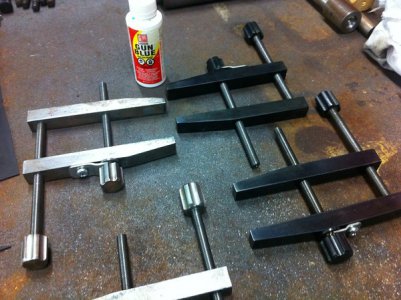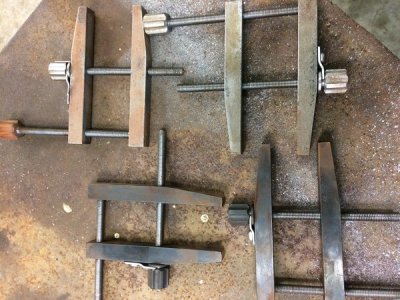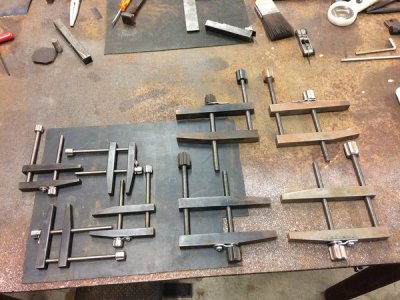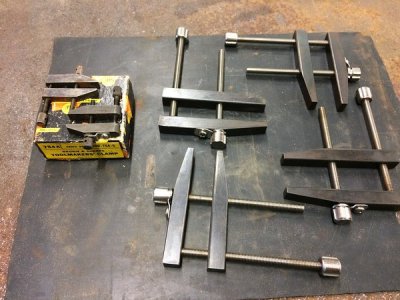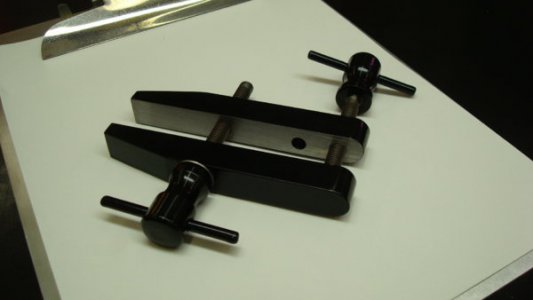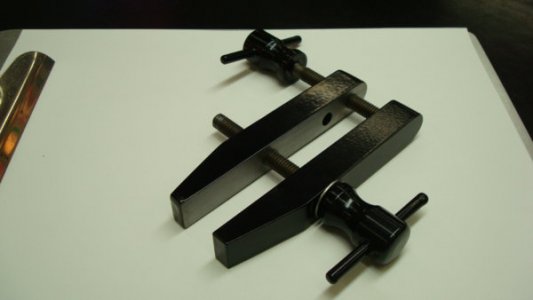- Joined
- Oct 20, 2014
- Messages
- 133
I got it into my head that I wanted to make some toolmaker clamps. I found a drawing on Harold Hall's site, worked out what size I was going to make them and started cutting up stock.
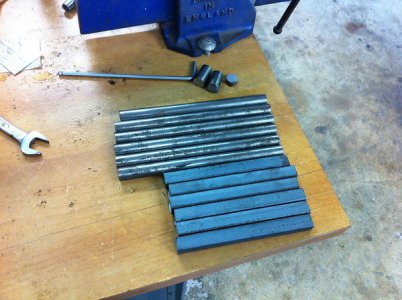
I figured I may as well make a few sets. Only limited by the length of 16mm square bar that I had.
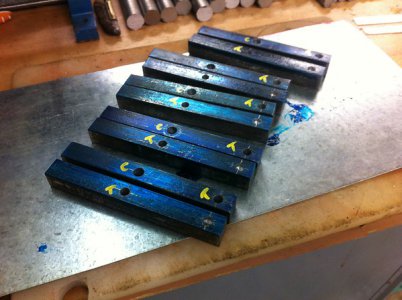
Crude centring device before clamping to the table to start tapping.
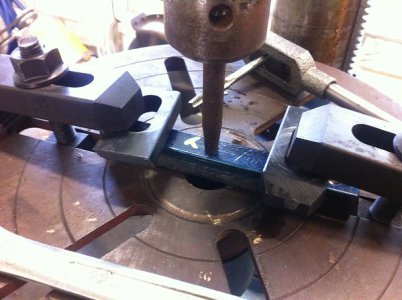
Milling the backs of the clamp ends.
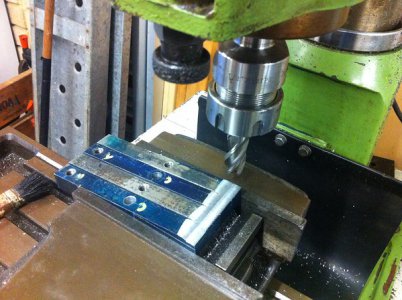
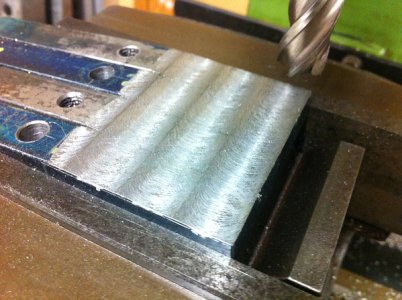
Turning 20mm round down to 8mm
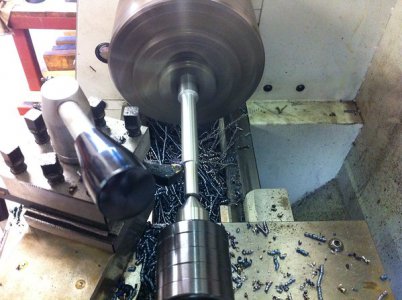
I pushed past the limit and broke a few on the way. I learnt more about the variables and forces when turning. Rotation speed, depth of cut, feed rate, diameter. What different chips get produced and what they look like. I learnt about the limits of the clamping force of the chuck.
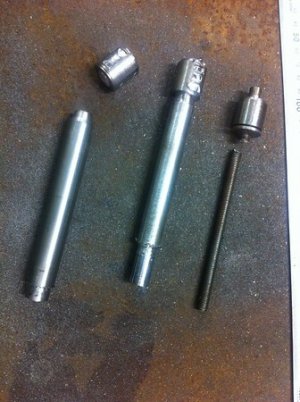
I also learnt to spend more time to read drawings. There were two versions of clamps on the same drawing but I didn't realise until I'd marked everything up and drilled holes in every piece that I wanted to build the "other" version. So I did some patching up and made two pairs of both types. The "handles" have 6 x grooves each done with a round end end-mill. That was seriously tedious work.
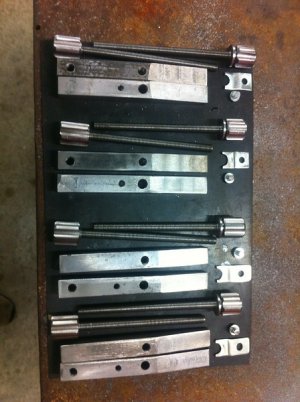
The nearly finished product. Still some finishing to be done.
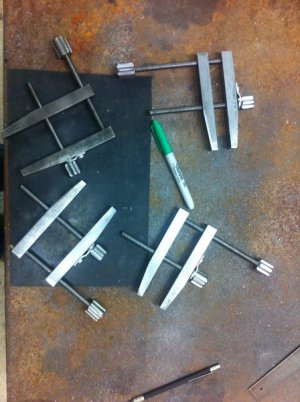
There was no rational reason to make 4 pairs of these. I'm glad I did because I learnt more by making multiple of the "same" parts than if it was a "one-off" project. I could and did experiment.
Learning by doing. You can't beat it.
pete

I figured I may as well make a few sets. Only limited by the length of 16mm square bar that I had.

Crude centring device before clamping to the table to start tapping.

Milling the backs of the clamp ends.


Turning 20mm round down to 8mm

I pushed past the limit and broke a few on the way. I learnt more about the variables and forces when turning. Rotation speed, depth of cut, feed rate, diameter. What different chips get produced and what they look like. I learnt about the limits of the clamping force of the chuck.

I also learnt to spend more time to read drawings. There were two versions of clamps on the same drawing but I didn't realise until I'd marked everything up and drilled holes in every piece that I wanted to build the "other" version. So I did some patching up and made two pairs of both types. The "handles" have 6 x grooves each done with a round end end-mill. That was seriously tedious work.

The nearly finished product. Still some finishing to be done.

There was no rational reason to make 4 pairs of these. I'm glad I did because I learnt more by making multiple of the "same" parts than if it was a "one-off" project. I could and did experiment.
Learning by doing. You can't beat it.
pete




